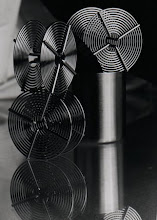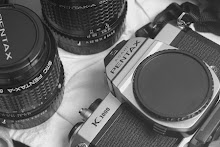Nowadays, I have great stuff. Over the years I have been able to advance to the point where I believe that I can confidently say that I own a professional camera rig. Sometimes, I am self-conscious about how I think I must appear to other people who walk by as I am making a picture. But, those treasures only make my life easier. They do not, in and of themselves, make the image possible.
I spent over 20 years intermittently operating the most basic equipment. I did not have regular access to a darkroom. I could barely afford to process film. When my frames were exposed, I had to budget carefully to come up with the money to get that roll printed and developed. My progress was slow; my failures were common and plentiful.
I had so many failures that one day I sat down and ripped up stacks of my photographs. A couple of hundred prints were ripped in half, by me, and thrown in a cardboard box. They were all thrown away. At the time I was thinking that if I were to become a professional photographer, if I were to become a great artist, it would be imperative that my mistakes were hidden from everyone forever.
Well, it’s probably not a major loss that those old photographs are gone. The ones I destroyed were all a major disappointment. Each one, one by one, was its own minor disappointment. As a group, they were a big failure. All totaled, the whole box of ripped up prints probably had cost me a couple of hundred dollars. I felt the fear of the price tag of what I was doing as I ripped up those prints. But, I was determined to put that all behind me. In practice, it wasn’t destroying those photos, but another fifteen years of failure and maturity that eventually made for better photographs.
In those prints I destroyed, each time I had failed to show the image that I was seeking to capture. Every time, I tried and failed. Even if the exposure was right, the composition was wrong. I particularly remember that I was wrong as a young teenager about my pictures of squirrels.
As a boy, I wanted to be a nature photographer. I wanted to have the sort of traveling photojournalist adventures that I am sure many people daydream about when they think of photography. I wanted to go to exotic places, do adventurous things; I wanted to be the guy who rappelled down that difficult cliff face; I wanted to be the photographer who took the picture of the people who would summit the mountain; I wanted the action shot of the grizzly bear; I wanted the play of the sunlight on a bird’s feathers in a picture suitable for John James Audubon. I wanted that adventure and that life. The closest I came on a daily basis were pictures of squirrels in the yard.
Squirrels are a not grizzly bears, but they can also require stalking. There I was, a young teenager, reading up on nature photography and stalking techniques. How did the professionals operate from their hide? How did they select the right path so that they made sure their scent blew downwind when the animal they stalked was upwind from them? I never really got to do any of this, but time after time, I would pick up my 35mm camera, use the one telephoto lens I had from my dad, and set out to take a picture of a squirrel in the yard.
The photos were terrible. I never got close enough. Even with the telephoto lens (200mm), I would still screw up. How and why would this happen?
It was usually because of the decisions I made as a photographer.
Later on, years later, decades later, I crouched in the forest to take a picture of a flower growing in the wild. A deer walked by. It was not the first deer I had ever seen, maybe it was the hundredth. My camera was not ready. My rig was set up for close-ups of the flower I was going to photograph. If I was to change my equipment, surely the rustling and zipping and clicking would be enough to startle that young deer.
It was a juvenile. Growing into an adult, that young deer still had traces of its spots. It was picking its way through the forest floor. Judging by its path and the weather, I think it was thirsty. There was a creek nearby. This creek fed a beautiful waterfall here in the forests of Tennessee. I stayed there, crouched near my camera on a tripod, and did not try to take a picture of the deer. I knew I would not be able to get ready. I knew I did not have time to measure the light or frame a good composition or change the configuration of my equipment. I could see that deer slowly walking by. Even for an animal that requires stealth to survive, it made noise as it walked along the dried leaves of the hardwood forest’s floor. The deer was about 15 meters away. I watched it walk on past me, and I enjoyed it. That was a great chance to be a nature photographer. I am glad that I had learned not to be too ambitious; my rustling through the camera bag would have been useless; I would have only spoiled the moment; and, I would not have gotten the picture in time. Instead though, I crouched there in my street clothes, enjoying an afternoon in the woods, and I watched a deer walk by as I set out to photograph a flower in the woods.
Not bad for a kid born in the city of New Orleans. As a child, I thought I would be lucky to be in a place where there are mountains and trees and animals. I was right about that.
The camera I was using was rigged up for photographs of flowers. There’s no need to rush down to the store and buy equipment for the deer-stalking photo. Even if you can afford it, there’s no guarantee that the opportunity will present itself in the right way at the right time for you to take that great picture. Instead, you have to make the decisions that you make, and take the pictures you take, with what you have at the time.







No comments:
Post a Comment